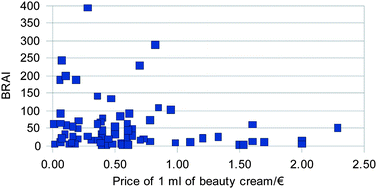The first quantitative rating system of the antioxidant capacity of beauty creams via the Briggs–Rauscher reaction: a crucial step towards evidence-based cosmetics
Abstract
Oxidative damage is the primary cause of skin

* Corresponding authors
a
ITIS Montani, Via Montani 7, Fermo, Italy
E-mail:
teresacecchi@tiscali.it
b Università degli studi della Tuscia, Viterbo, Italy
c Università degli Studi di Camerino, Dipartimento di Scienze Chimiche, Via S. Agostino 1, Camerino, Italy
Oxidative damage is the primary cause of skin

 Please wait while we load your content...
Something went wrong. Try again?
Please wait while we load your content...
Something went wrong. Try again?
T. Cecchi, P. Cecchi and P. Passamonti, Analyst, 2011, 136, 613 DOI: 10.1039/C0AN00637H
To request permission to reproduce material from this article, please go to the Copyright Clearance Center request page.
If you are an author contributing to an RSC publication, you do not need to request permission provided correct acknowledgement is given.
If you are the author of this article, you do not need to request permission to reproduce figures and diagrams provided correct acknowledgement is given. If you want to reproduce the whole article in a third-party publication (excluding your thesis/dissertation for which permission is not required) please go to the Copyright Clearance Center request page.
Read more about how to correctly acknowledge RSC content.
 Fetching data from CrossRef.
Fetching data from CrossRef.
This may take some time to load.
Loading related content
